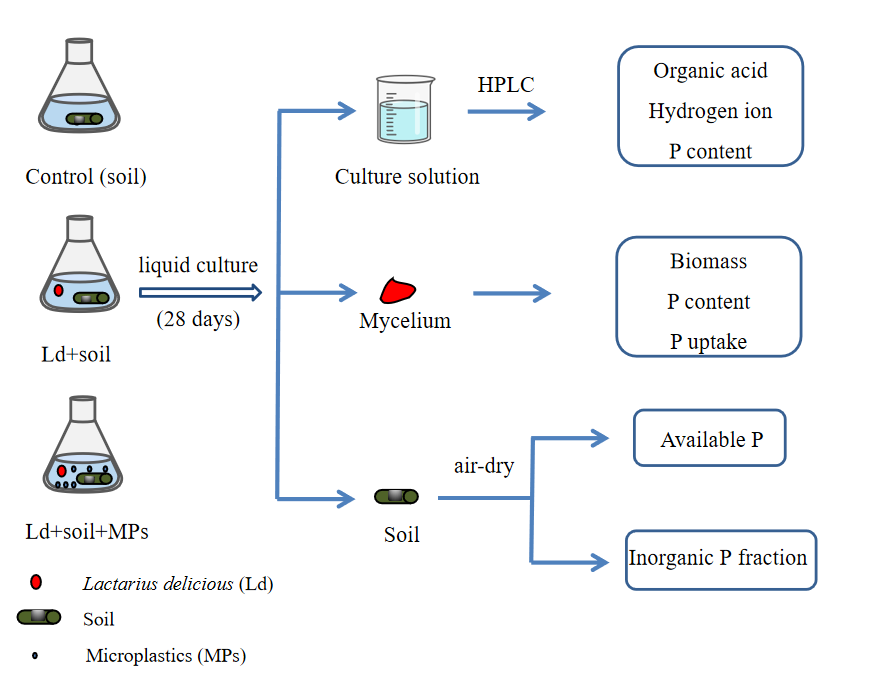
Microplastics (MPs) can affect the phosphorus (P) cycle in soil by changing soil properties and the function of microbial communities, but their impact on soil P availability remains unclear. To explore the effects of different types of MPs on the mobilization of soil inorganic P by exomycorrhizal fungi, Lactarius delicious (Ld) was used as the test strain, and polystyrene microspheres (PS), polypropylene (PP) and poly (lactic acid) (PLA) were used as test materials. The soil was used as the only P source for the media. The effect of different types of MPs on the mobilization of soil inorganic P by exomycorrhizal fungi was studied using liquid culture method. The results showed that exposure to MPs at low to medium concentrations (10 or 100 mg L-1) activated inorganic P in soil by stimulating the secretion of additional organic acids and hydrogen ions by ectomycorrhizal fungi, improving the available P in soil. The effect of mobilizing inorganic P was more significant in the treatment groups exposed to low and medium concentrations of biodegradable PLA. This may be related to the fact that PLA stimulated the ectomycorrhizal fungi to secrete more organic acids, and the release of a large amount of lactic acid after PLA was biodegraded. However, when the exposure concentration of MPs further increased, the growth of ectomycorrhizal fungal mycelium may be inhibited, the secretion of organic acids and hydrogen ions may be reduced, and the mobilization ability of soil inorganic P may be limited. In addition, it should be noted that high concentrations of non biodegradable MPs (PS and PP) had significant limiting effects on the mobilization of soil inorganic P by exomycorrhizal fungi. Therefore, our study results provide evidence that the presence of MPs may reduce the availability of soil P. Further research should focus on maintaining or improving P availability in plant-microbe systems in MP-polluted soil.
Total file downloads: 21